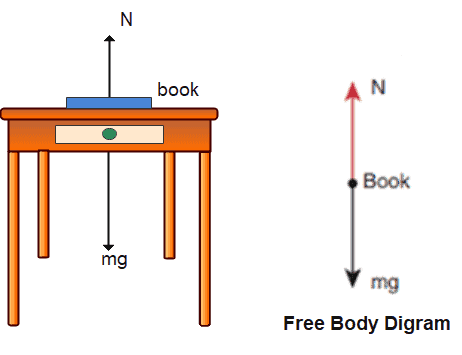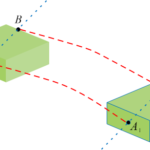Let’s learn about the examples of balanced forces in this article. The universe is all about various kinds of forces acting all over space giving birth to new elements, planets, stars, and galaxies, and also responsible for destroying them. Forces don’t just act on bigger objects but are present on much smaller levels too. Then it may be an electron or a gigantic black hole, forces exist in both scenarios.
These forces are majorly divided into two types known as ‘Balanced Forces’ and ‘Unbalanced Forces’. In this article, we are going to focus on and try to understand the ‘Balanced Forces’. So let’s dive into it.
Learn more about the Effect Of Force
Balanced Forces:
Balanced forces are nothing but a set of forces acting on a point or an object whose net resultant force is zero in magnitude. We can easily assess such a set of forces provided we know their magnitudes individually and the angle they are acting upon. With this information, a free-body diagram will be required to analyze the forces.
The horizontal and vertical components of the forces are calculated by using vector mathematics. The magnitudes of these components are then added up assigning proper signs to the magnitudes depending upon the direction the component is acting. If the sum of the vertical components and the horizontal components are both zero, the set of forces can be called balanced forces.
Let us try to understand with an example of its Free Body Diagram (FBD).

Consider a book at rest kept on a table as shown in the figure above. The free-body diagram of the book is shown on the right side displaying the forces existing in the picture. The book has some mass (m) and therefore its weight will be acting downwards. This force is shown as ‘mg’.
In response, a normal force from the table is generated to counter the weight of the book. As these two forces are equal in magnitude and opposite directions, the net resultant force becomes zero. So, in this case, we can say that the book is acted upon by balanced forces.
Examples of Balanced Forces
There are a lot of examples of balanced forces that happen around us which can give great insight. Here are some examples of balanced forces
1. Game of Tug (Equally powered teams):
Assume there are two teams playing tug of war and both the teams have equally efficient and strong players. Although this is hypothetically impossible as some differences will always be there this is an assumption.
When the game starts, both the teams will pull the rope with equal strength which will cancel the pull forces ultimately resulting in a balanced force. The rope in this case experiences tension forces but the stresses generated inside balance keep the rope intact.
2. A Chandelier hanging to the ceiling:
Big mansions, hotels, and villas have these big chandeliers attached to the ceiling which make the space look royal. But how is that big thing hanging out in mid-air? The chandeliers are attached with the help of chains to the ceiling by some kind of hooks.
So, when the big sparkling chandelier forces itself down due to its weight, tension builds up in the chain by which it is attached to the ceiling. This creates a force equivalent to the weight of the chandelier and it remains there mounted.
3. A Wooden block floating in water:
We know that wood is less dense than water. So, when a block of wood is kept on the water’s surface, only a part of that wooden block submerges into the water, and the remaining stays afloat.
Here, the wooden block exerts its weight onto the surface of the water but in return, the buoyancy force generated by the fluid acts back on the submerged volume of the wooden block. The buoyancy force being equivalent to the weight of the wooden block cancels it and we have a balanced force system where the wooden block remains at rest.
4. Magnetic Levitation of trains:
Magnetic levitation has enabled us to be in an era of fast-moving trains that reach unbelievable speeds and have no contact with the ground. This levitation also eliminates unwanted elements such as friction, makes the ride more efficient, and lifts the whole train above the ground.
Consider such a train at rest at a station. The weight of the train acts downwards but due to the property of magnetic levitation of the rails and the railway combined mechanism the magnetic field generates a force that keeps the train at a distance from the ground. A great everyday example of balanced force.
5. Weighing on a Spring Balance:
Spring balance is used to measure weights at several places. You also must have seen these devices at your physics laboratory. When an object of mass m is hanged from the spring balance, the spring stretches imparting pull force of the same magnitude as the object’s weight. This expansion in the spring is usually given by Hooke’s law which is
$F = -kx$
where $k$ is the spring constant and $x$ is the expansion. So, the weight of the object is balanced by the spring force converting it into a balanced force system.
Conclusion:
Forces in nature can be balanced or unbalanced depending upon the net resultant of all forces at a particular point. If zero, the system is balanced otherwise not. A balanced force helps objects to remain at rest whereas unbalanced forces help to move an object from rest or bring an object in motion to rest.
A free-body diagram of any system can give a much clearer view of whether the system is balanced or unbalanced. The examples that we saw above are just a few of what we see in our lives and if you look closer you will find many balanced systems similar to these in your daily life too.
Learn more about balanced and unbalanced forces
Frequently Asked Questions
Do Balanced forces change the direction of motion?
No, when balanced, the forces applied to any object do not change its direction of motion. (See Effect Of Force for more information)
When will Force be Balanced?
When two or more forces acting on a body are equal in magnitude but opposite in direction, forces are balanced. Forces acting in one direction cancel out the effect of forces acting in the opposite direction. As a result, the net force acting on the object equals zero.






